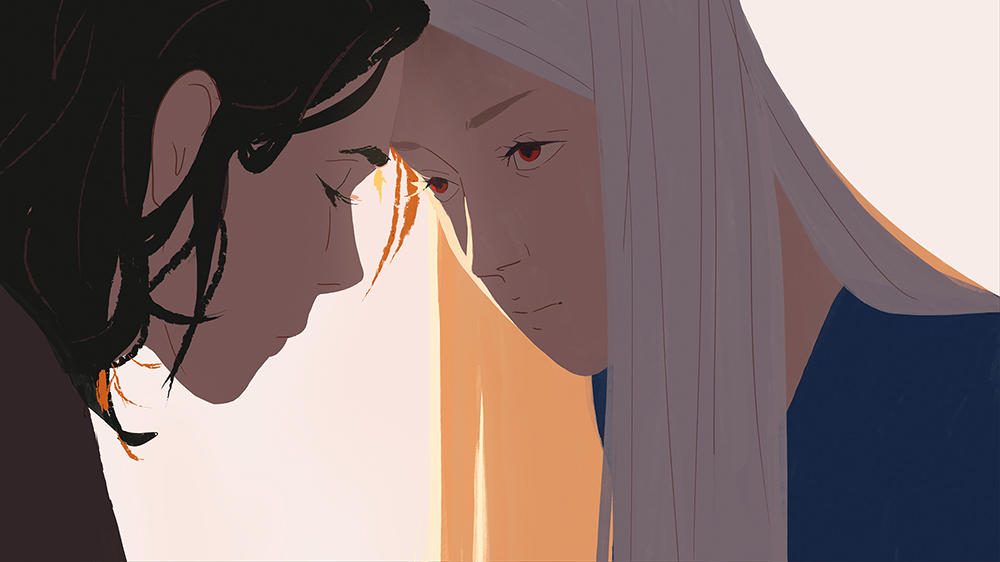
Norwegian animation “Pesta,” directed by Hanne Berkaak, will head to the Frontières Platform in May. Directed at genre film professionals, the event is organized by the Fantasia International Film Festival with the Cannes’ Marché du Film.
The film, set in 1349 during the outbreak of the Black Plague, will see two teenagers, Astrid and Eilev, fighting for their forbidden love among the apocalypse as Astrid, a nobleman’s daughter, struggles with her growing desire for “the outcast heathen.”
Granted development funding from the Norwegian Film Institute, “Pesta” is produced by Mikrofilm’s Tonje Skar Reiersen and Lise Fearnley. It’s also named after a shadowy figure from Norwegian folklore, a personification of the plague itself.
“She was depicted as an old woman travelling from farm to farm, carrying a rake and a broom. Where she used her rake, some would survive. Where she swept her broom, everyone would die. Dark stuff,” said producer Tonje Skar Reiersen.
“Theodor Kittelsen [one of the most popular artists in Norway] has drawn and painted some really uncanny pictures of her that scared the life out of generations of Norwegian children.”
Despite its historical setting, the film is bound to hit differently after the world’s struggles with COVID.
“I actually got this idea during the pandemic. Today, young people are fearing the end of the world once again, because of climate change and the war. Still, I want to encourage them to seek beauty and love,” said Berkaak.
“It’s very important for it to feel fresh and contemporary, with a Nordic fingerprint reflected in music, color palette and cinematic language. But I am also a history nerd, so even if we take liberties, it’s all inspired by myths and research.”
Pesta
Courtesy of Mikrofilm AS
Nordic folktales are known for their “extremely grim and violent nature,” she observed, as is the time she depicts, the Black Plague claimed 75 million-200 million victims, according to different estimates.
“The Black Death is one of the darkest periods in European history. Not only because of the brutality of the illness itself, but also because it led to the collapse of the society. In Norway, the plague and its repercussions wiped out 60% of the population.”
Which is why “Pesta” will be directed at a more mature audience, although its portrayal of a young couple falling in love is bound to add some levity too.
“So far, we have defined the main target audience as young adults (aged 16-26) with an interest in fantasy and genre, both live-action and animated. We definitely want the film to travel beyond the festival circuit and get distribution in cinemas and/or on a streaming platform,” added Reiersen.
“Since it’s an animated feature, we have the liberty to be graphic without making it unbearable to watch for a wider audience. However, we will not shy away from portraying the gory effects of the plague,” observes Berkaak.
While the film will have a 2D look, the team will make use of 3D tools to ensure a “dynamic” visual language and make it feel relevant, Berkaak assured, recalling the directors who have inspired her over the years, starting with Yuri Norstein, Jan Švankmajer and Zlatko Grgić.
“Later, when I moved to New York to study animation [at Parsons School of Design] I was introduced to the works of Satoshi Kon, Katsuhiro Otomo and Ralph Bakshi. Ghibli and Disney also made a big impact, especially ‘Princess Mononoke,’ as well as Tim Burton.”
Berkaak also names Mati Diop’s Cannes breakout “Atlantics” among recent discoveries, or the works of Karyn Kusama, Jordan Peele and Robert Eggers, viewing her film’s historical background as the perfect setting for horror.
“It was a time of magic and superstition: People believed in everything from God to trolls. The Christianization of Norway took place gradually, with Catholicism coexisting alongside pagan traditions and beliefs in the Norse gods. Although strict laws tried to prevent blood sacrifice and devil worship, in desperate times, people turned to any available deity.”
But the end of the world can also mark a brand new beginning, she says.
“In Norway, the Black Death wiped out big parts of clergy and nobility, clearing the path for a more equal society. The poor got access to free land, women improved their position and took back some of the power they had during the Viking era. For a while, people were more accepting. I find that truly inspiring.”














